DEMA 2005 Sony HDV Camera Report
Wetpixel video moderator Drew Wong went around the DEMA Show 2005 looking at the new housings for the Sony HDV cameras. Here is a little mini-report:
Sea & Sea
The new VXHC1 housing is very much like the old VX950 housing. The specs are already mentioned in another post. The new VMC-75 (a 2.5” monitor) sits in the front on the housing which may cause balance problems but it is light at 4.8kg and the form factor is compact. There is no manual white balancing. The old VX950 and 2100 ports can be used with the housing using the old VX950 step up ring. Something to consider for those who invested in the VX2100 SWA lens. The housing is due to ship next month.
user posted image
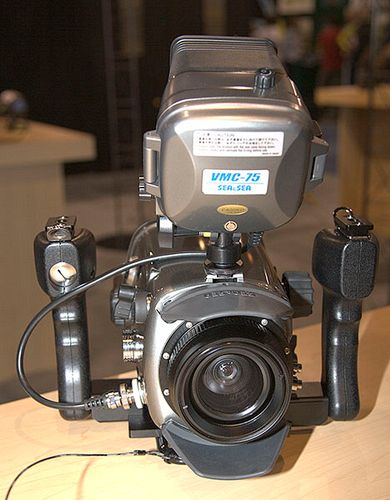
The FX/Z1 housing is anodized black and looks the most sleek and beautiful of all the housings I saw. As with the old VX2100 housing, it is a combination of manual and IR electronic controls, using the ancient and limited but rock solid Sony grip. Sony also developed a wideangle converter boasting 98° view but it has quite a fair bit of distortion and really isn’t wide enough. I couldn’t tell if there was any vignetting. It sells for over $3000. The housing shows typical S&S fare, with a lens shade built into the VF to protect the camera from being fried by the sun (something other manufacturers should take heed of for the people who are using their cameras often in the field). It is also angled nicely and the VF is big and plenty of space for mask and reg since it protrudes out from the housing.

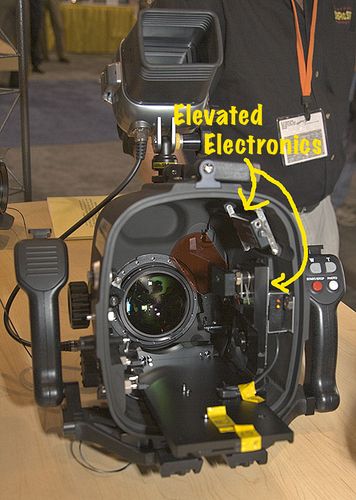
The internal electronics are high up in the housing and also protected from errant drops of water, so there is further protection for the dreaded water damage (add a sanitary napkin and it would be almost impossible to drown). You still have to lift your hands to change WB, but it is better than the old VX 2100 housing. There are still NO menu controls. The housing was balanced when used with the standard lens but I didn’t try the SWA converter. Apparently the NX bayonet port are the same as the macro ports from the still cameras and can be used on this housing, but creates buoyancy and handling issues like the old VX2100 housing. The housing is available now.
Amphibico
The FX/Z1 Phenom was reviewed by Paul Wags here. The vignetting problem is known by Amphibico and they are looking for a fix. There is no SWA lens yet in the pipeline. Also the tray electronics are uncoated and bare at the bottom of the housing. There is very little space for any measures like sanitary napkins etc. Extra care when opening in the field will be necessary due to the exposed IC boards. Also the view finder is 16:9 style and now has pictogram to tell you not to let direct sunlight into the VF (due to a few (including me) people frying their vf on the cameras) Would be so much easier to just have a built-in shade like the S&S.
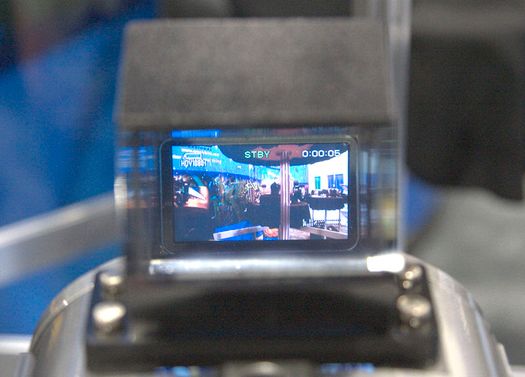
However, I have to hand Amphibico the most innovative award for first thinking about the glass view area for the camera’s LCD monitor, then coming up with an ingenious prism block that utilizes the LCD window like monitor but fixed onto the housing. This wonderful like piece is robust (much better than a separate LCD monitor housing) and simple. I’m sure Amphibico will sell the prism as standard (when it ships in Nov/Dec) when they see the demand. Other news is a new 4.5 16:9 LCD monitor to entice people to upgrade from the new prism.
The new HC1 housing is the Evo, with the same grip controls and flip filter. Optics are similar to the TRV950/PD10x housing. The cool thing is that the lanc control allows manual white balancing independent of the on screen LCD controls.
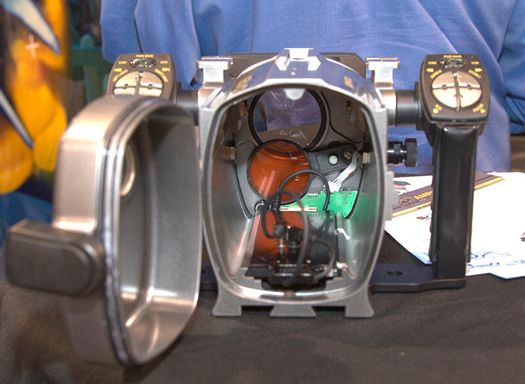
Light & Motion
The new Blue Fin HD for the FX/Z1 has the same LCD glass area design like the Amphibico, but no prism device. They still use the small 2.5” monitor and widescreen(16:9) viewing is forced so it’s even smaller. The IC boards are all exposed on the rear bulkhead as well as in the main housing. They are coated for protection but still errant drops of salt water from hair, wind etc could possibly make it a lousy day. Such a design requires more care in opening and handling the open housing.
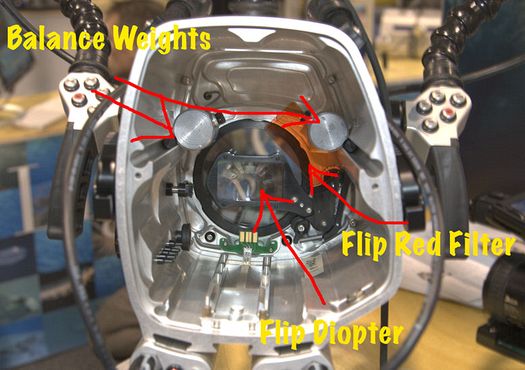
There is an internal ballast on the sides where you can adjust the balance of the housing. The Bluefin is the biggest of all the electronic housings.
There is also a macro port for even better closeup lenses, and with the internal ballast it should be well balanced but we’ll have to wait to test that notion. ( I think it’s a pity now that HDV gives video higher resolution, some of the manufacturers seem to think single element diopters would suffice when the older DV cameras could fit dual element diopters in the macro ports). And they will be shipping the FX1 housing in 2-3 weeks. They say there will be a SWA lens but no ship date on that.
The Bluefin HC1 housing is standard L&M bluefin housing like the PD10X/TRV950 housings, with a drawback, there is no true manual whitebalancing for the camera in this housing, but some sort of hack. The A1 version has a button that can be assigned to white balance and the housing will have access to that.
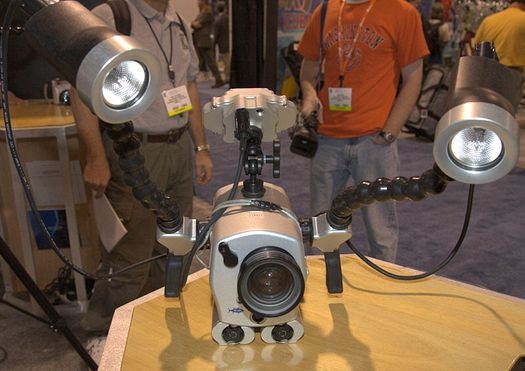
Gates Underwater Housings
The HC1 and FX1 housing both have smart weight distribution design integrated into the housings. You can shift the handles on the top of the housings to adjust balance and hand size. There are also the Super WideAngle lens for the housings by Fathom Imaging. The FX1 SWA lens is massive and has a buoyancy collar. The HC1 SWA is smaller but is very long. Gates also has the biggest monitor available at 4.1” but still in 4:3 format. So the 16:9 widescreen mode will be smaller.
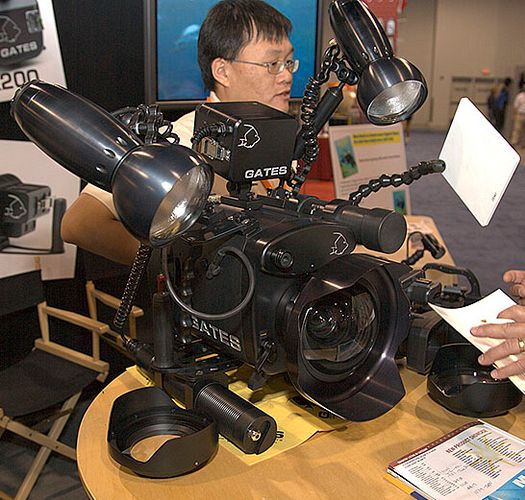
Gates FX1 housing with Fathoms SWA lens (which promises 107° without vignetting)

Gates HC1 housing with Fathoms SWA lens (note how much weight is toward the front)
Gates also offers housings for the XL2 and soon the XL HDV cameras from Canon. The XL2 housing is similar in size to the FX1 but a bit longer. The ports are designed to use the XL2’s own lenses. Gates has also promised housing for the Panasonic HDV200, probably the most advanced of the HDV cameras for the price.
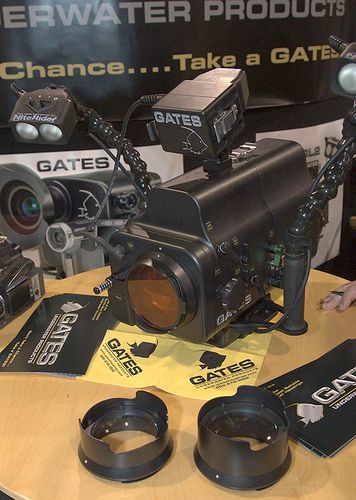
Gates Canon XL2 housing
Overall, the housing manufacturers have listened to the consumers. Most have made adjustable balance as features, one of the most important things for a shooter. Still no one housing has a significant advantage. Some lead in optics, other in functionality. Amphibico has jumped ahead in releasing a wonderful prism VF that is hopefully cost effective. It can be viewed in 16:9 as a reflection of the camera’s own hi res LCD monitor. The L&M and S&S monitor solutions are small and are 4:3 forced to widescreen 16:9, which makes the picture even smaller.
Amphibico have a very wide standard lens, but to avoid vignetting the FoV shrinks to about 85°. Gates has the very cool Fathom Imaging 107° lens for the FX1. The first to break 100° for the HDV 3CCD camera. But it’s not cheap at $5k. S&S has a 98° converter but I didn’t try it and have heard rumors of vignetting and distortion (from competitors so I took it with a sack of salt).
The only certain thing is that prices of these toys haven’t stayed in line with the older housings. For instance, the Amphibico VH2000 started at $3200 at DEMA in 2001, the Phenom is over $6k. The same for the other manufacturers. The smaller HC1/A1 housings also follow in line with the VX950/PD10x housings but nothing to the point of the big 3CCD camera housings. The future seems to be more expensive for HDV shooters, unfortunately.